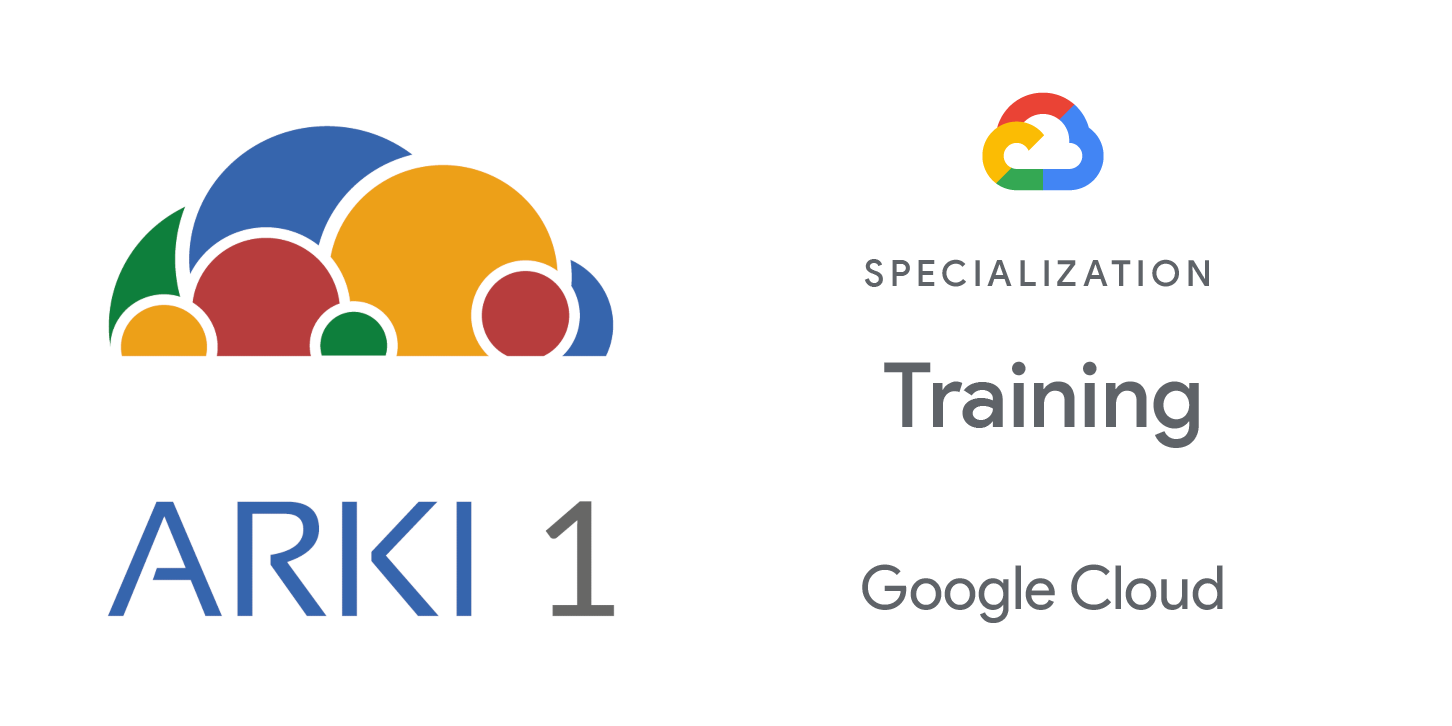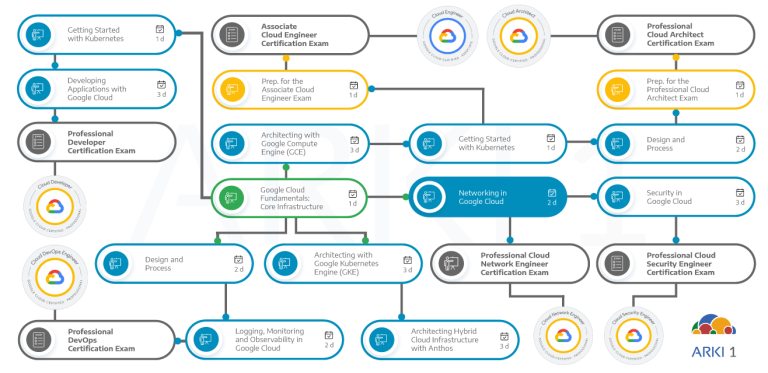Este curso de capacitación se basa en los conceptos de redes cubiertos en el curso Fundamentos de Redes en Google Cloud. A través de presentaciones, demostraciones y laboratorios, los participantes exploran e implementan tecnologías de redes de Google Cloud. Estas tecnologías incluyen: redes de Virtual Private Cloud (VPC), subredes y firewalls; interconexión entre redes; balanceo de carga; Cloud DNS; Cloud CDN; y Cloud NAT. El curso también cubrirá patrones comunes de diseño de redes.
Objetivos
Este curso enseña a los participantes las siguientes habilidades:
• Configurar redes VPC, subredes y enrutadores.
• Controlar el acceso administrativo a los objetos de la VPC.
• Controlar el acceso de red a los endpoints en las VPC.
• Interconectar redes entre proyectos de Google Cloud.
• Implementar conectividad de red entre proyectos de Google Cloud.
• Implementar balanceo de carga.
• Configurar la gestión del tráfico entre los servicios backend del balanceador de carga.
• Usar Cloud CDN para reducir la latencia.
• Optimizar los gastos de red utilizando los Niveles de Servicio de Red (Network Service Tiers).
• Configurar opciones de conexión privada para proporcionar acceso a recursos y servicios externos desde redes internas.
Público
Esta clase está dirigida al siguiente público:
- Ingenieros y administradores de redes que usan el console de Google Cloud o planean hacerlo.
- Individuos que desean exponerse a soluciones de redes definidas por software en la nube.
Prerequisitos
Para aprovechar al máximo este curso, los participantes deben cumplir con los siguientes criterios:
- Finalización de curso Google Cloud Platform Fundamentals o experiencia equivalente.
- Comprensión previa del modelo OSI de 7 capas.
- Comprensión previa del direccionamiento IPv4.
- Experiencia previa en el manejo de rutas IPv4.
Duración
Inversión
Resumen del curso
• Create a Compute Engine VM with multiple network interfaces.
• Use the standard tier to lower cloud networking costs.
• Use the premium tier to provide lower latency and faster access to Google Cloud
resources.
• Describe the different ways to share VPC networks that are available in Google Cloud.
• Recognize when to use Shared VPC and when to use VPC Network Peering.
• Configure peering between unrelated VPC networks.
• Configure uptime checks, alerting policies, and charts for your network services.
• Monitor Google Cloud network resources.
• Use VPC Flow Logs to log and analyze network traffic behavior.
• Define key routing and addressing concepts relevant to Google Cloud, including IP addresses, subnets, route tables, firewalls, BYOIP, and NATs.
• Describe the configuration and management options for Google Cloud DNS, including private and managed zones.
• Configure and manage route tables to control traffic flow, resolve domain names effectively, and utilize NAT rules for secure access.
• Define and differentiate various private connection options (e.g., Private Google Access, Private Services Access, Private Service Connect).
• Explore use cases of Private Service Connect, Private Service Access, and Private Google Access.
• Implement Private Google Access with Cloud NAT.
• Describe the Google Cloud provides components that create a good network architecture, such as Cloud Interconnect, VPC Network Peering, Shared VPC, and Network Tiers.
• Summarize key considerations for network design.
• Explain when to use each network topology based on specific requirements.
• Identify potential bottlenecks or security vulnerabilities in network topologies.
• Implement a meshed topology for a resilient and scalable network architecture.
• Identify the four layers of DDoS Mitigation.
• Identify methods Google Cloud uses to mitigate the risk of DDoS for its customers.
• Use Google Cloud Armor to blocklist an IP address and restrict access to a global external Application Load Balancer.
- Describe how IAM policies affect VPC network access.
- Identify the benefits of using Cloud Firewall’s hierarchical policies at different levels of the cloud infrastructure hierarchy.
- Apply global and regional network firewall policies using Cloud Firewall.
- Explain the role of Cloud IDS in protecting VPC networks from malicious activity.
- Deploy Cloud IDS and configure its settings according to specific security needs.
- Describe the role of Secure Web Proxy in improving network resilience and availability.
- Describe best practices for cloud network security.
- Define Packet Mirroring and explain its purpose in network monitoring and security.
- Learn network security best practices.
- Describe the benefits of hybrid load balancing.
- Configure traffic management in a load balance
- Describe how to configure an internal network load balancer as a next hop.
- Use Cloud CDN configuration to optimize content delivery performance.
- Create a Google Cloud Armor edge security policy to protect content.
- Describe the various connectivity options offered by Google Cloud for hybrid and multi-cloud environments, including Network Connectivity Center, Cloud VPN, Cloud Interconnect, and Cloud CDN.
- Define and differentiate between the various Cloud Interconnect options available in Google Cloud, including Dedicated Interconnect, Partner Interconnect, and Cross-Cloud Interconnect.
- Implement high availability VPN (HA VPN) for redundancy and failover.
- Identify the benefits and use cases for Cloud HA VPN.


